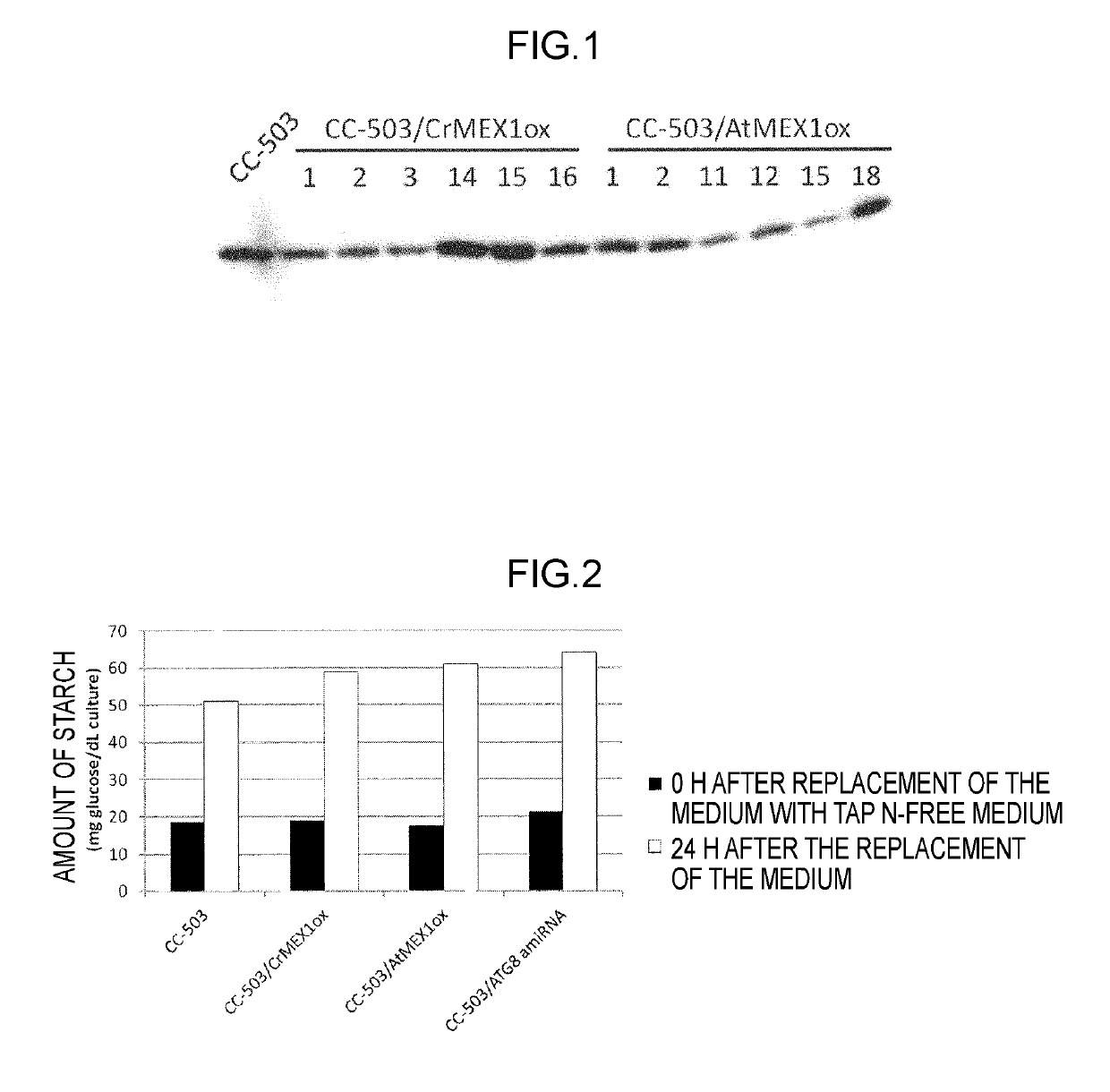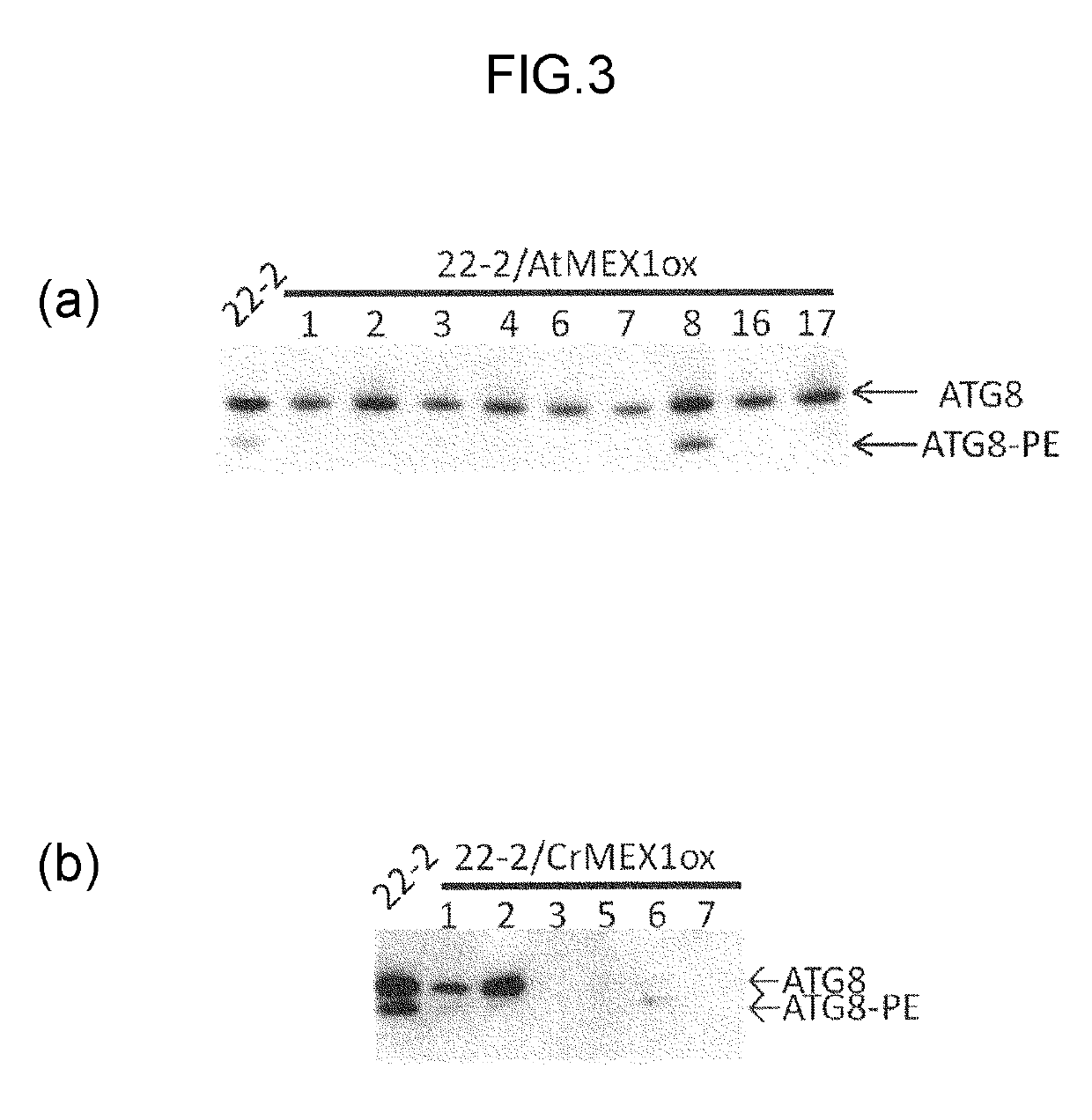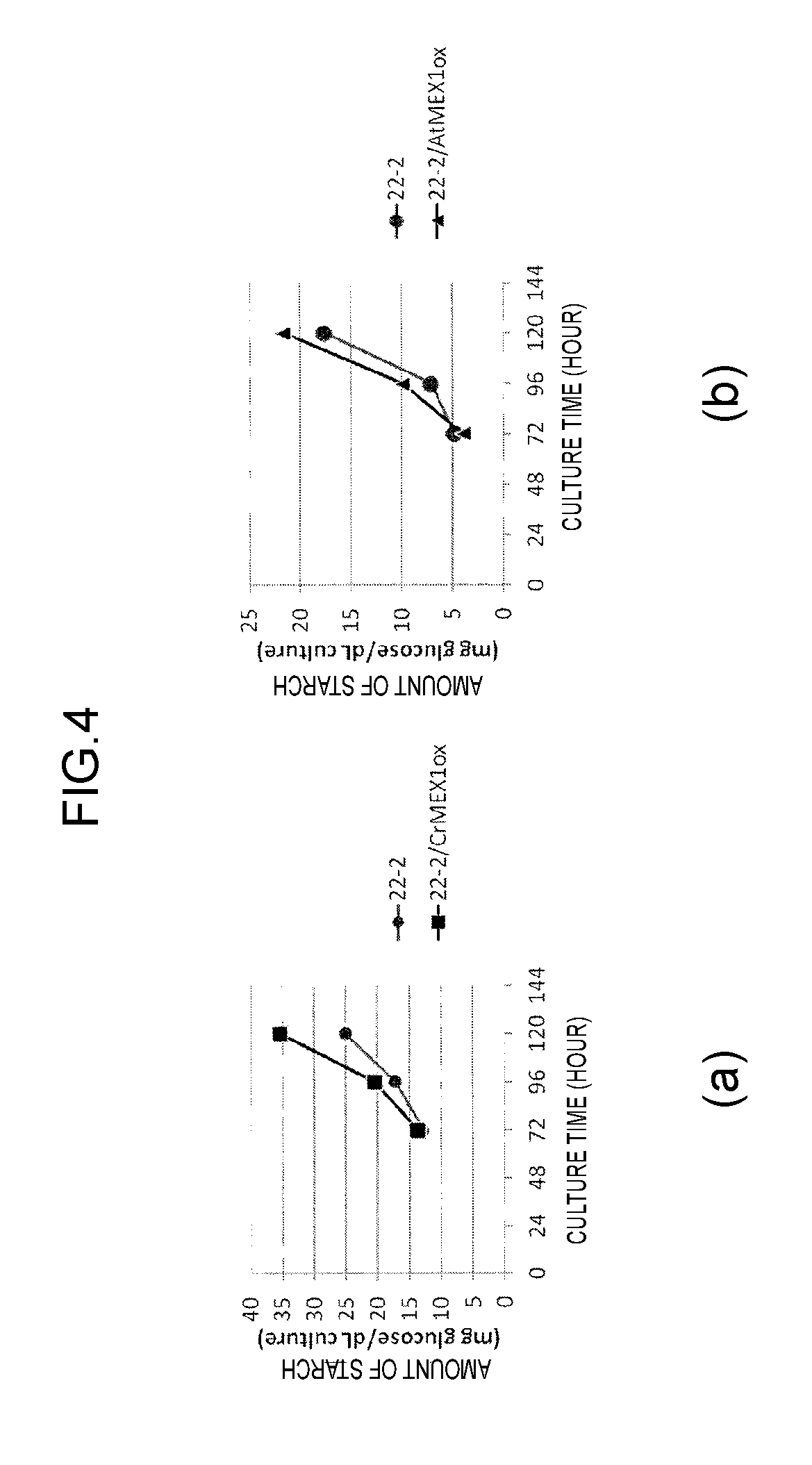Algae and method for producing same, and method for producing biomass using said algae
a technology of algae and biomass, which is applied in the field of modified alga, a method of producing the same, and a method of biomass production using the same, can solve the problems of food and forage price soaring, and achieve the effects of reducing costs, suppressing atg8, and increasing intracellular photosynthetic productivity
- Summary
- Abstract
- Description
- Claims
- Application Information
AI Technical Summary
Benefits of technology
Problems solved by technology
Method used
Image
Examples
example 1
Production of Modified Algae
[0171]The MEX1 gene (SEQ ID NO: 4) encoding the MEX1 protein from Chlamydomonas reinhardtii (SEQ ID NO: 3; hereinafter, referred to as “CrMEX1”) was ligated to the downstream of the Hsp70A / RBc_S2 promoter to prepare a plasmid.
[0172]Specific procedure was as follows: A circular DNA vector for Chlamydomonas, pChlamyl (available from Life Technologies Corporation) was sequentially treated with restriction enzymes Kpn I and Not I to be cleaved (DNA fragment 1). A polynucleotide (about 1.7 kbp) consisting of nucleotides 163 to 1830 of the sequence set forth in SEQ ID NO: 8 was prepared by the following method.
[0173]Chlamydomonas reinhardtii CC-503 strain (supplied from Chlamydomonas Genetics Center at Duke University, US) was cultured in a TAP medium for four days at 24° C. and under irradiation with light with an intensity of 50 μE / m2 / sec. The cells were then collected from the culture, and a cDNA mixture was prepared from the cells using a cDNA synthesis rea...
example 2
Influences on the Expression of ATG8 in the Wild-type Strain by the Overexpression of MEX1
[0198]The modified strains with suppressed expression of ATG8 produced in Example 1 (CC-503 / CrMEX1ox and CC-503 / AtMEX1ox) were cultured and analyzed to determine the expression of ATG8. In detail, each strain with suppressed expression of ATG8 was cultured in a TAP medium under shaking, and the cells were collected after 72 hours. The cells were then lysed and analyzed by western blotting. The wild-type Chlamydomonas strain CC-503 (hereinafter, referred to as “parent strain (wild-type strain)”) was used as a control.
[0199]The results are shown in FIG. 1 illustrating the expressions of the ATG8 protein in the clones produced in the Example, and indicating that the expression of ATG8 was suppressed in the cells with overexpression of MEX1 (see CC-503 / CrMEX1ox clones 1, 2, 3, and 16; and CC-503 / AtMEX1ox clones 1, 2, 11, 12, 15, and 18). The expression level of the ATG8 protein in each clone is sho...
example 3
Influences on the Starch Production in the Wild-type Strain by Overexpression of MEX1 and Silencing of ATG8
[0201]The modified strains with suppressed expression of ATG8 produced in Example 1 (CC-503 / CrMEX1ox and CC-503 / AtMEX1ox) were transferred into a nitrogen-sufficient TAP medium at a cell density of 0.5×104 cells / ml, and then were cultured under shaking and continuous irradiation with a light intensity of 100 μE / m2 / sec (preliminary culture). When the cells during the preliminary culture reached the logarithmic phase, the culture was centrifuged to collect the cells. The cells were then resuspended in a nitrogen-deficient TAP medium (TAP N-free medium) at a cell density of 5.0×106 cells / ml (replacement of medium). Cells were collected to determine the amount of starch therein, just after the replacement of the medium and after shaking culture in the nitrogen-deficient TAP medium (TAP N-free medium) for 24 hours. The determined value is an amount of starch per culture (calculated ...
PUM
| Property | Measurement | Unit |
|---|---|---|
| mean particle size | aaaaa | aaaaa |
| diameter | aaaaa | aaaaa |
| mean particle size | aaaaa | aaaaa |
Abstract
Description
Claims
Application Information
 Login to View More
Login to View More - R&D
- Intellectual Property
- Life Sciences
- Materials
- Tech Scout
- Unparalleled Data Quality
- Higher Quality Content
- 60% Fewer Hallucinations
Browse by: Latest US Patents, China's latest patents, Technical Efficacy Thesaurus, Application Domain, Technology Topic, Popular Technical Reports.
© 2025 PatSnap. All rights reserved.Legal|Privacy policy|Modern Slavery Act Transparency Statement|Sitemap|About US| Contact US: help@patsnap.com



